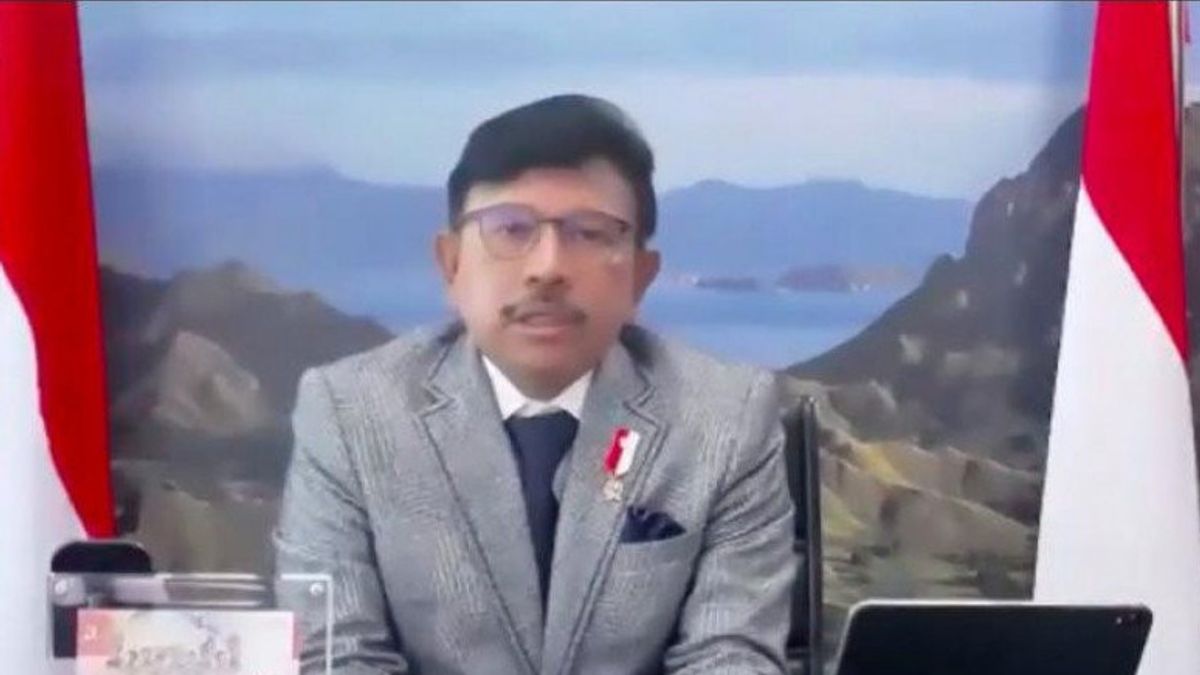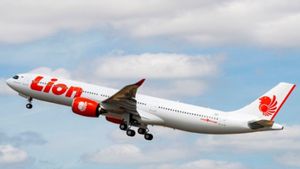JAKARTA - The Minister of Communication and Informatics (KemKominfo) Johnny G. Plate said that the government is currently working to accelerate the 5G spectrum allocation initiative. This step was taken to meet the frequency spectrum needs of 2,047 MHz, for broadband cellular networks, both 4G and 5G in 2024.
Johnny believes that the 5G network will be a game changer that will have a broad impact on connectivity in Indonesia. It has even become the backbone of digital transformation and the main driver of economic growth.
"It is very important to plant and regenerate the 5G spectrum to meet the demand for the 2.047 MHz frequency spectrum," said Johnny at the International Virtual Conference: Indonesia 5G Roadmap & Digital Transformation, Thursday, December 10.
Johnny added, the existing and new candidate bands in the coverage layer (below 1 GHz) include 700/800/900 MHz. Then the capacity layer (between 1-6 GHz): 1.8 / 2.1 / 2.3 / 2.6 / 3.3 / 3.5 GHz, and the super data layer (above 6 GHz): 26/28 GHz.
Meanwhile, the government also claims to have conducted 10 trials for the implementation of the 5G network during 2017-2019. This is aimed at studying potential applications and use cases for 5G services. Covering distance learning through holographic interaction, remote operation, IoT for smart cities, and autonomous vehicles during the 2018 ASIAN Games.
"In 2020, Indonesia will focus its 11th trial to explore the possibility of coexistence between the 5G network and the Fixed Satellite Service (FSS) to be used in the 3.5 GHz band," said Johnny.
Apart from that, Indonesia is also trying to make optimal use of microwave links as the second option after fiber optic cables.
"Because the E-band frequency is very high (70-80 GHz) and V-band (60 GHz) can also serve high capacity backhaul for broadband services," said Johnny.
Johnny also realizes that efforts to implement a 5G network will require large capital expenditures, especially for the provision of 5G small-cell densification and a sophisticated digital ecosystem. Therefore, he stated that the capital of the new state of Indonesia would be the best and potential candidate city to implement the first 5G in Indonesia.
"Apart from several industrial areas and public areas with high traffic that might also be possible," continued Johnny.
On the other hand, to date the Indonesian government also claims to have built more than 348,000 kilometers of land and submarine fiber optic cables. Including more than 12,000 kilometers of National Fiber Optic Backbone Network Palapa Ring BAKTI Kominfo.
More than 500,000 base transceiver stations (BTS) have also been built, and utilize 9 satellites to meet domestic needs for adequate connectivity.
"We also plan to launch the 150 Gbps SATRIA-1 High-Throughput Satellite which is scheduled for the third quarter of 2023," said Johnny.
Thus, the development effort is also part of the preparation for the development of the 5G network in Indonesia.
"We continue to improve digital infrastructure, including in all villages where 4G connections are not yet reached. However, the main task of ensuring adequate, accessible and affordable 4G as a basis for developing a 5G network remains relevant, "he added.
The English, Chinese, Japanese, Arabic, and French versions are automatically generated by the AI. So there may still be inaccuracies in translating, please always see Indonesian as our main language. (system supported by DigitalSiber.id)













